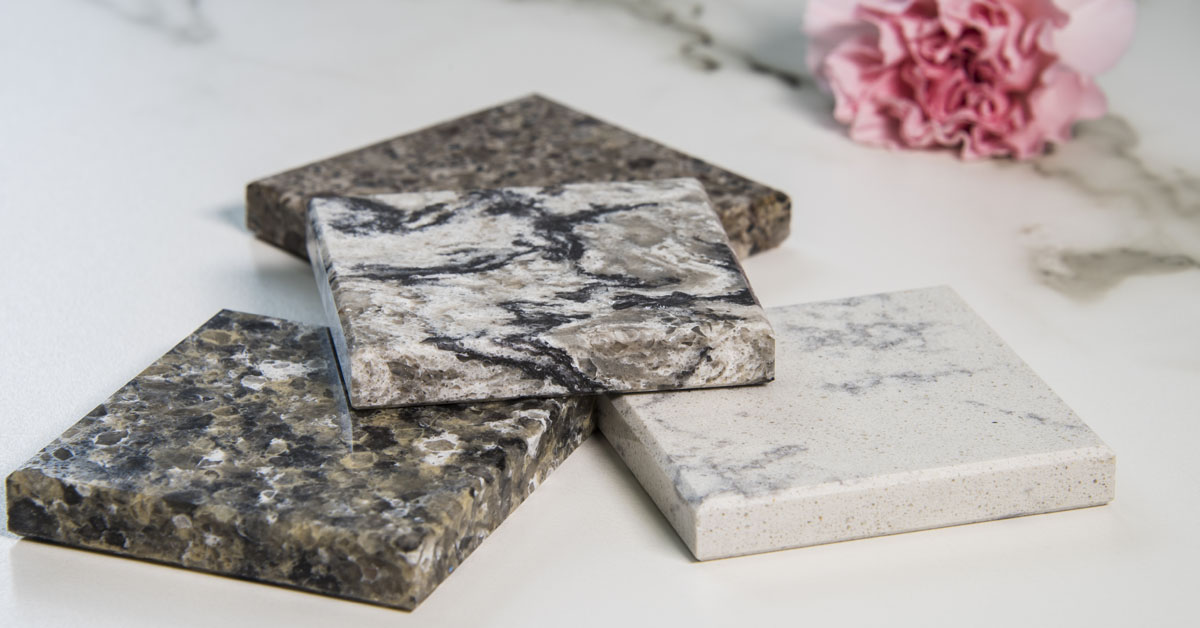Why Granite & Quartz Pricing Varies by Color
Ever wonder why there is such a wide range of pricing for various granite and quartz colors? Aren’t they all generally the same product? Well, not entirely.
A common countertop myth is that the various pricing levels you see in the showroom are dependent on “grades” – or quality levels. Although it is true that there are various grades of natural materials in the marketplace, many countertop suppliers will only carry “A” grade stones, so quality is equal level to level. Most manufacturers of quartz products also follow high quality standards, so you are not buying a better or lesser quality from group to group, just a different color.
In this blog post, we’ll explore some of the reasons why pricing varies from color to color.
Natural Stone Pricing
Color Supply & Demand
Popular trends, as well as market supply and demand, have an effect on pricing. If everyone wants a certain color, the price is going to increase because there’s only so much of that particular color out there.
What determines the color of granite, anyway? It’s all about the ratio of various minerals within the slab. For example, if the granite has a high ratio of quartz and amphibole, it will have a distinctive speckled black and white appearance. Granite with large quantities of potassium feldspar will look pink, while large quantities of amphiboles make it look green.
Some colors are rarer, while others are more abundantly found in the Earth’s crust. Colors that are more common in nature tend to be more cost-effective. For this reason, many darker slabs with consistent patterns are usually the most budget-friendly option; however, there are many lighter tones in this range as well.

Color Location
Location also factors into the equation. If a color is mined from a remote or distant area, there will likely be higher transport costs. These costs would reflect in the final price per square foot.
Slab Veining
Of course, the type of veining and amount of variation plays a huge part in the granite’s final look. Generally, more veining and variation merits a higher price. On the other hand, colors with simple patterning (with a few exceptions) tend to be more available, and therefore less expensive.
Manufactured Quartz Pricing
Manufacturers of quartz products also place their offerings into similar tiered-price groups. The difference here is that the availability of a color in nature doesn’t impact the final price – because it’s man-made!
Although the actual size of the quartz slab can influence the cost because of yield, the price per square foot primarily comes down to how easy or difficult it is to achieve certain colors with pigments and design.
Conclusion
When shopping for beautiful new countertops, homeowners generally choose color as the deciding factor for their purchase. It’s easy to understand why, since the perfect hue and pattern can enhance a space like no other. And since countertops often serve as feature statements in high-traffic rooms like kitchens and bathrooms, many homeowners are willing to spend a little extra if their preferred color is in a higher-priced grouping.
On the other hand, sometimes the ideal choice is found in a lower-cost entry group. It all depends on the desired final look for the interior space. Either way, remember this color pricing information during your next countertop renovation to make the best choice for your project.
Our extensive selection of materials, colors, patterns and textures offers something for every buyer. Contact us today to get started!






